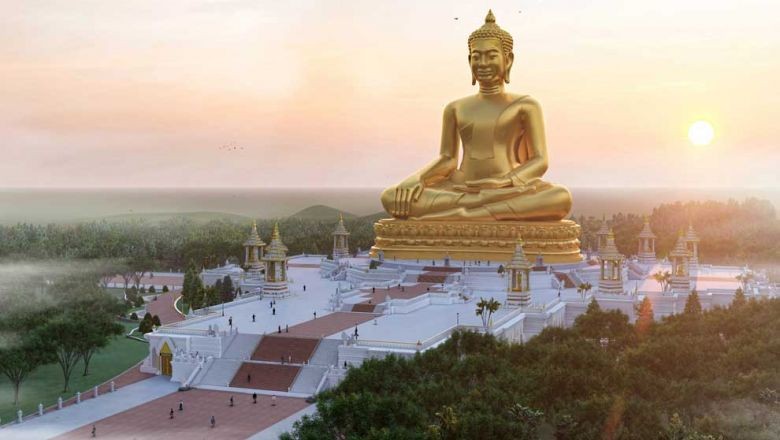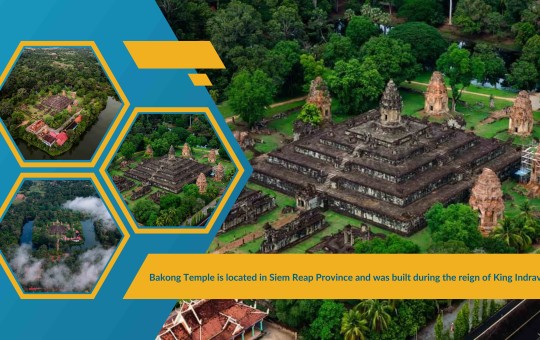
Cambodia’s first largest Buddha focus of Bokor Park festivities
In contribution to the construction of one of the world’s largest Buddha statues, as well as 84,000 smaller Buddha statues, a significant fundraising event is scheduled to take place on September 23-24 on a ridge within the “500 Rice Fields” region of Preah Monivong Bokor National Park.
The fundraising initiative is led by Venerable Chan Visal, the head of Wat Pearanasey Serey Monkul, in collaboration with Sok Kong, the chairman of Sokimex Investment Group, the company behind the project.
They aim to gather donations from nearly 3,000 participants, including monks and devotees from across the country.
According to the plan, the 108m-tall statue, which broke ground in early January at a projected cost of approximately $30 million, is expected to take four years to complete.
Besides the construction of the statue, which is intended for followers worldwide, Cambodian monks and Sokimex have also undertaken the task of carving 84,000 smaller Buddha statues, each corresponding to one of the 84,000 passages of Dharma.
“These exquisite smaller statues will find their place upon the inner pedestal of the magnificent statue, currently in the process of construction and advancing according to our plans,” shared Say Sophertra, director of sales and marketing at Sokha Hotels & Resorts, a subsidiary of Sokimex.
The smaller statues measure 31cm high, 25cm long and 16.5cm wide, with four tiers and nine floors, meticulously fashioned from Bokor stone, known for its strength and durability.
“Sok Kong’s vision is clear, and his generosity shines through in the endeavour to build the 108m-tall Buddha statue, encompassing both a grand Buddha figure and numerous smaller ones.
“This act is a dedication of the merits we’ve gathered, whether in this lifetime or the next, and it’s a commitment to safeguard our nation’s religious heritage, connecting the past to the present in this era of harmony and progress,” Sophertra said.
Buddhists interested in acquiring small statues have the option to have their names, along with those of nobles, grandparents and loved ones inscribed on these statues. The practice serves as a way to accumulate merit and uphold a rich historical tradition.
“These statues will stand the test of time, becoming enduring treasures of our national culture, a profound shrine for Buddhists of all ages, and a priceless heritage for generations yet to come,” Sophertra added.
Venerable Serey Keo Kakda explained the concept of the 84,000 passages of Dharma, derived from 110 Buddhist texts.
The passages encompass the Sutta Pitaka (Basket of Discourse), the Vinaya Pitaka (Basket of Discipline) and Abhidharma (ancient Buddhist texts).
Within these volumes, the Sutta Pitaka holds 21,000 passages, the Vinaya Pitaka contains another 21,000 passages, and the Abhidharma encompasses 42,000 passages.
Furthermore, as outlined in Chhun Kim Iet’s book Theory of Karma, the Vinaya Pitaka prescribes 227 subjects of disciplinary rules for monks, with 311 for nuns.
The Sutta Pitaka explores profound dimensions of Dharma, including wisdom, sin and morality, whereas Abhidhamma concentrates on the realm of psychological analysis.
Fashioned in the likeness of a seated Maravijaya Buddha, the 108m-tall statue takes inspiration from the 13th-century Bayon Temple and includes a reinforced concrete base adorned with a gilded finish.
The base, with dimensions of 248m by 186m, integrates staircases designed in the manner of Angkor Wat, symbolising the four cardinal points.
Within the sanctuary, there will be 12 Buddha statues, with amenities for religious and cultural activities.




